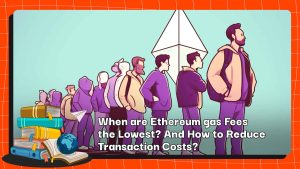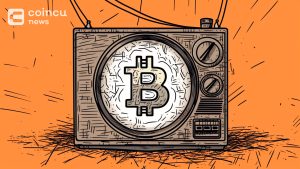The Blur Airdrop Was A Huge Success, What Can Web3 Founders Learn From It?
Key Points:
- The Blur airdrop highlighted the need for better security measures among cryptocurrency users.
- Blur’s innovation lies in the adoption of a sequential airdrop model, which builds the network in stages and matches new product launches.
- Cryptocurrency projects should use the lessons learned from the airdrop to improve future airdrop processes and promote better security practices.
Since its public launch 5 months ago, Blur has established itself as the industry’s top NFT marketplace and trading platform, with over 40% market share by volume before the airdrop in February 2023. Beating incumbents in the face of intense competition requires more than product and user experience improvements—it requires sophisticated incentives to guide and increase user adoption.
Over the past few years, ideas for using tokens to build networks have emerged, including incentivizing the growth or loyalty of participants, capturing value, or providing core utility for various types of products. The common token play focuses on one-time retrospective airdrops to motivate participation and reward early users (e.g., Uniswap, ENS); to continuous liquidity mining projects that reward users for performing certain actions (e.g., LooksRare, Compound).
Researching Blur reveals a more complex token distribution design that offers staged rewards to queue the growth of the network. This analysis will consist of two parts: the first post will unpack Blur’s approach to the token and provide advice for founders looking to grow their network using the token. A future blog post will share data analysis to quantify the impact of airdrops on the market and usage.
Background on the Blur airdrop
BLUR has a total supply of 3 billion tokens, of which 360 million, or 12%, were airdropped and claimable on February 14. As of February 20, 112,000 unique wallets have claimed the airdropped tokens, with 93% of the tokens claimed. As of February 20th, with a token price of $1.21, the total value of the airdrop was over $435 million, with a median airdrop of 298 tokens ($360 worth).
Prior to the airdrop, there were several phases of Blur’s token incentives, collectively referred to as “Season 1”, which is similar to the sequential manner in which the network grows. Importantly, during these phases, instead of airdropping tokens, users receive off-chain “care packages” that can be viewed on Blur’s website as credits for future airdrops of BLUR tokens or mystery boxes.
Season 1 rewards have four phases
0 Airdrop: Reward social referrals to attract traders to its platform (announced May 4, 2022).
You get points when you join, when you use invites, and when people you invite, use invites.
The first phase of Blur’s airdrop was announced in May 2022 while the platform was still on the waiting list and rewarded users who actively referred others to the platform. It’s worth noting that these rewards are calculated in a way that incentivizes not only invites but also high-volume traders.
Airdrop Phase 1: Reward Ecosystem Trading Activity (Announced October 19, 2022)
Blur’s first airdrop coincides with the public launch of its NFT aggregator and marketplace. This airdrop rewards users who have been active in Ethereum NFT transactions for the past 6 months. To claim the airdrop, users need to list an NFT on Blur within 14 days.
“Our goal is to make Blur a marketplace that the entire NFT community owns and benefits from. Our first step is to airdrop care packages to everyone who has consistently traded NFTs over the past 6 months.”
Airdrop Phase 2: Rewarding addresses for building supply in the market (announced on October 19, 2022)
At the same time that Airdrop 1 was announced, Blur also announced Airdrop 2 to reward individuals who list NFTs on Blur by November. The second airdrop also rewarded traders for using Blur’s new features, including their professional order placement tools (e.g., order by NFT feature reserve price, floor price NFT, etc.). Airdrop 2 further rewards frequent listing traders, lists actively traded collections and incentivizes blue-chip NFT listings.
Notably, Blur also encourages users to stay loyal to the marketplace rather than other NFT marketplaces:
“Loyalty doesn’t affect how many care packages you get in Airdrop 2, but it does affect your luck in revealing them. When you list on other marketplaces, as long as you pay the same price or less on Blur List, the price is without affecting your loyalty score. You can use Blur’s advanced order book tool to list NFTs on all NFT exchanges at once!”
Airdrop Phase 3: Reward bidding to stimulate demand (announced on December 14, 2022)
With a supply base at a lower price than other markets, Blur announced its third airdrop with a focus on building the demand side. At the same time as the third airdrop, Blur launched their bidding contract, which allows traders to bid for collections more efficiently (e.g., no gas bidding).
Blur also encourages traders to create the best bid-ask spread possible, and traders who bid better can get more rewards.
“In a set, bids that take the highest ‘risk’ earn the vast majority of points. i.e., if the reserve price is 1.01, there are 100 bids at 1, and you bid at 0.99, then your bid won’t earn many points because there are 100 buyers ahead of you, but if you bid at 1.01, you will earn more points because now you are taking the most risk.”
Crucially, while listings are no longer incentivized during this period, Blur maintains the same loyalty promise: users who list on Blur for the same price or less will get more when they open their care package luck (meaning more airdrops), which helps keep Blur’s lowest price relative to the rest of the market.
Care package
Care packages come in four different rarity levels: Common, Rare, Legendary, and Mythical. The rarity of care packages is tied to a user’s loyalty score to Blur, which differentiates actions such as listing a common NFT or a blue-chip NFT, with rare packages earning more tokens.
February 14, 2023 – Nearly a year after the original airdrop was announced, users can open their care packages to reveal the BLUR tokens inside. The top five wallets each claimed over 2 million BLUR tokens, with a median airdrop of 298 BLUR ($360 value as of Feb 20) and an average of 2,995 tokens ($3,623 value).
In order to claim their airdrop, users need to tweet about the airdrop. Blur tweets pre-filled with the requested amount of tokens (users can edit tweets and claim airdrops).
Key Lessons From the Blur Airdrop
Blur’s innovative airdrop design has some big learnings:
- Market Growth for Sequential Airdrops
Blur’s innovation lies in the adoption of a sequential airdrop model, which builds the network in stages and matches new product launches.
- This sequential airdrop of tokens has two key effects:
- The network is built in stages corresponding to the way supply is built first in the market, followed by demand.
Keep Blur users engaged and give them access to newly launched product features (such as bidding contracts).
- Uncertain rewards create greater motivation
Like most cryptocurrency projects, Blur decided to keep the airdrop (care package) specifics until launch, but the point is they abstracted the details behind a gamified and quantifiable care package that provides short-term rewards to users in the interim. Each airdrop after that is “more valuable than the next,” creating an incentive to keep participating because users don’t know the true notional value they will receive.
Contrast this approach with LooksRare’s original token distribution strategy, which functions more like DeFi liquidity mining, with rewards being a function of specific market activity.
LooksRare rewards traders based on volume, meaning traders can reliably calculate how many tokens (and dollar value) they will earn based on how much they trade on a given day. This has resulted in traders brushing in exchange for LooksRare token rewards and resulting in little to no consistent organic activity (94% of LooksRare’s historical volume is claimed to be wash trading).
In studies that compared the effort people put in to win some kind of reward versus an uncertain reward, researchers found that uncertainty creates greater motivation and effort. Blur’s model closely mirrors the four-step habit-forming process proposed by author Nir Eyal: a trigger point to start using the product, an action to satisfy the trigger point, a variable reward for the action, and some type of investment that ultimately makes the product more useful to the user. Users are more valuable.
Another related strategy is to use care packages of varying rarity to reward loyalty and promise more Blur Tokens for rarer care packages. This gamifies uncertainty, creating an incentive for users to get rarer care packages.
- Incentivize virality and social sharing
In order to get off the waiting list and join the early beta, users need to earn as many Blur points as possible. Blur gamifies and rewards users’ viral coefficient (the number of new users generated by existing users), recommending users who share more get more points. From influencers tweeting and users sharing referral links in group chats, Blur created a flurry of invites. Importantly, users who get the beta can earn points for the first airdrop, and participants on the waitlist and beta users can earn an additional airdrop from Blur.
Blur also specifically encourages sharing on Twitter, including promising a care package to a random user who retweets the announcement. Finally, opening the “care package” and claiming Blur’s airdrop requires tweeting, which will be pre-populated with Blur’s airdrop information. While users could circumvent this and still receive the airdrop (e.g., via tweet and delete), the mechanism still generated a huge buzz on the day of the airdrop, with thousands of tweets about the airdrop.
Finally, Blur maintains a leaderboard for users throughout the process, ranked by points. This creates gamified competition and social proof, showing the activity of other users.
- Transfer liquidity to Blur
Blur’s loyalty score – which determines the rarity of the Care Package airdrop – is determined by how well traders maintain competitive exclusivity within Blur. Traders maximize their Blur loyalty score by listing NFTs on Blur at a lower price than in other markets. Conversely, listing an NFT at a lower price on other marketplaces lowers a user’s loyalty score.
This incentive causes traders to list NFTs on Blur at a lower price, creating a supply moat for Blur and increasing its attractiveness to NFT buyers. During the bidding incentive period, bids closest to the reserve price were rewarded the most, further creating tight bid-ask spreads that kept Blur’s reserve price lower than prices on other markets.
It’s worth noting that Blur’s loyalty program will continue through the second season as an incentive to keep traders loyal to the platform.
- Continuous incentives for new users
Unlike many airdrop projects aimed at early adopters, Blur announced that it will continue to airdrop tokens for new users in the second season and will provide additional incentives to traders who list NFT and bid for NFT within thirty days after the airdrop.
On the day of the airdrop, Blur also announced a care package for new users. To apply for a care package, you need to browse the animated slideshow of Blur’s function, purchase NFT through the market, and put it on Blur’s shelves. This is strategic timing, as Blur’s website is likely to experience significant potential user traffic on the day of the airdrop. Meeting these new users on the day of the airdrop and incentivizing them to use Blur could be an effective customer acquisition strategy.
- Continuous iterative airdrop plan
On the day of the airdrop, Blur announced an Incentive Committee that will have the power to deploy 10% of the community token supply to further incentivize Blur adoption. Once the budget is depleted, the committee can also request more tokens through governance.
The committee allows for continuous iteration of Blur’s airdrop program — avoiding user manipulation to maximize the airdrop — without requiring ongoing DAO approval. This is similar to web2’s strategy of constantly updating incentives to optimize network dynamics.
Improvement suggestions and open issues
In reflecting on the airdrop, we identified several areas of opportunity for the future:
Focus on user retention
In order to further decentralize and retain users, one of the proposals in Marc Boiron’s Sufficient Decentralization Playbook is to incentivize the Committee to evolve into a sub-DAO, similar to the Uniswap Foundation, which may be a sustainable way. As the market develops, Keep the motivation alive.
Future airdrops could benefit from using a time-locked airdrop vesting schedule, i.e., users who sell are not eligible to receive the remainder of their allocated airdrop. Additionally, airdrops may be contingent on actions such as continued use of the platform (e.g., a certain number of bids or listings per month) or governance participation.
Build a moat around demand and supply
Blur creates an element of buyer lock-in through the use of bidding contracts, where users need to deposit money into Blur bidding contracts in order to bid. As of February 20, there were $128 million in deposits for the bid contract, which represented potential bids.
Blur could further enhance its demand-side maintainability by allowing users to earn a yield on deposited capital, provide professional traders with additional financial products; or use other incentives to help lock in liquidity. As the battle for the NFT market continues, creating a supply moat for the market will also be critical for future defensibility.
Token creation tool
Creating greater utility for the token, making it a core part of the product experience, and building demand for the token, can be the next area of focus. This can take inspiration from tokens like Binance’s BNB, which offers discounted trading fees on exchanges, or SuperRare’s RARE, which requires curating independent storefronts on a platform called Spaces.
Finally, there is the question of whether the token will generate value. Since the token’s launch, users on Twitter have questioned how the value of Blur token holders has accrued since there is an equity firm that builds and maintains the front end. Since Blur is the dominant (and only) application built on its protocol, this could lead to distorted incentives in driving the value of the DAO vs. the letter of promise.
Looking ahead to the next iteration of user incentive tokens
Given the recent airdrop, the long-term effects of Blur’s airdrop strategy will only become apparent over time. To date, over 75% of airdrop recipients have sold a portion of their airdrop.
Early data is promising regarding the effect of the airdrop, however, Blur’s bulk market share (according to bid sources) rose from mid-40% to over 80% within days of the airdrop. As of February 20th – a week after the airdrop – the 1st, 3rd, and 5th most airdropped recipients still hold their entire airdrop, over 2 million tokens each (worth $2.4 million+).
There is no doubt that Blur’s airdrop has broken new ground for token adoption for network growth. Ultimately, token incentives should aim to improve core KPIs: long-term retention and stickiness. The desired outcome of tokens is that user ownership makes products more successful than they would be without token ownership. Doing this still requires building products that people want, gradually decentralizing, and customizing an evolving plan for each product and protocol.
DISCLAIMER: The Information on this website is provided as general market commentary and does not constitute investment advice. We encourage you to do your research before investing.
Join us to keep track of news: https://linktr.ee/coincu
Harold
Coincu News
























